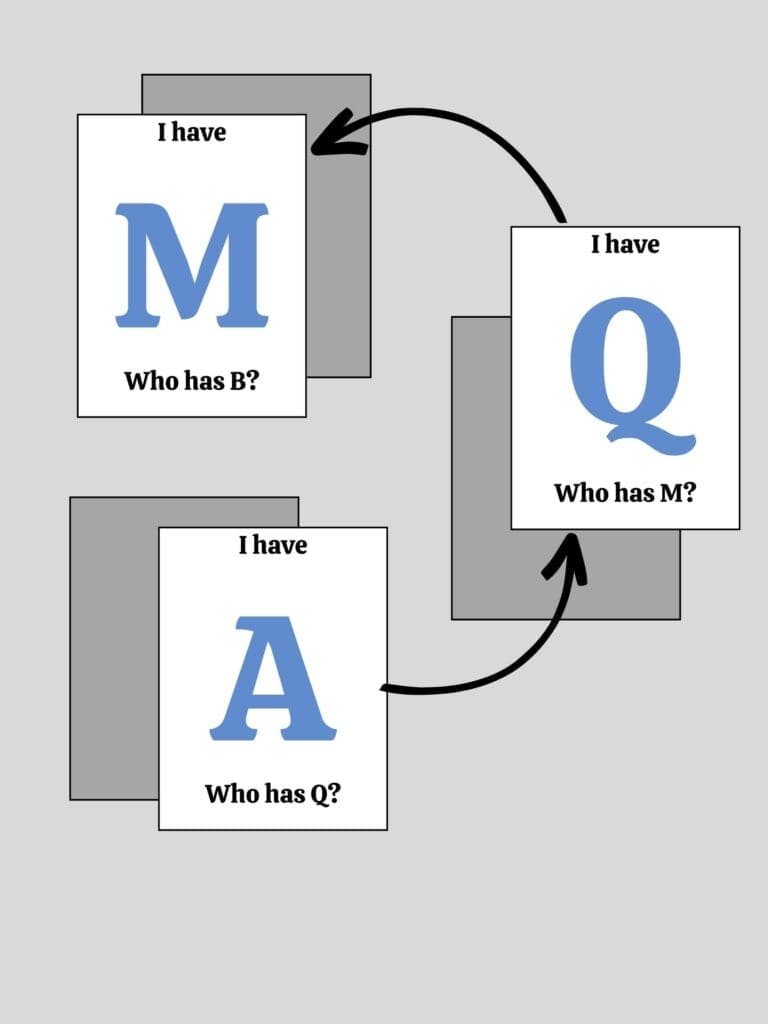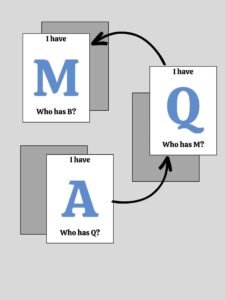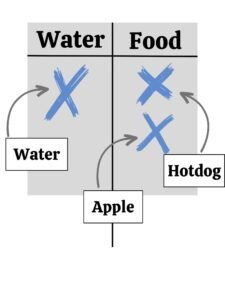A fun activity to help your students practice vocabulary by hearing, speaking and reading the vocabulary words.

This is a great way to practice vocabulary and can be used with words or pictures (or both!) on the cards.
Areas of Practice: lists of vocabulary (alphabet, months, days, etc.); reading; speaking; listening
Setup: You’ll need to create cards for this activity or print some off like these. Each card says “I have __. Who has ___?” For example, “I have A. Who has Q?” The next card has the answer and the next question, like “I have Q. Who has M?” The cards should continue through your list of items until the last card goes back to the very first “I have” statement to cover each item.
Directions: Pass out all of the cards to the students. If you have more items than students, they may get several cards, so try to mix them up well! Keep the first card and read it to start (for example, “I have hat. Who has jeans?”), then have students go through all of the cards. The student with the card that has the word reads that card aloud (for example,”I have jeans. Who has shirt?”) The game moves around the room until all of the cards have been read.
For a short video explaining the game, click here.
Adaptations:
Beginners: You might need to use exaggerated gestures (like a shrug and quizzical expression for “Who has?”) and help students read the words on the cards. This is a vocabulary review and shouldn’t be used for introducing new vocabulary.
Advanced: When a student has said the word (e.g., “I have koala”), s/he should make a sentence with it (“Koalas live in Australia.”) before reading the next part (“Who has kangaroo?”).
Virtual: This is possible virtually, but will require extra setup, either sending a file of individualized cards by email or through chat before the game. You might want to save this one for an in-person lesson
Activity adapted by Rachel Sloan, originally published in Roanoke Valley English Ministry Bulletin, November 2019 & December 2021. Reposted by permission.




